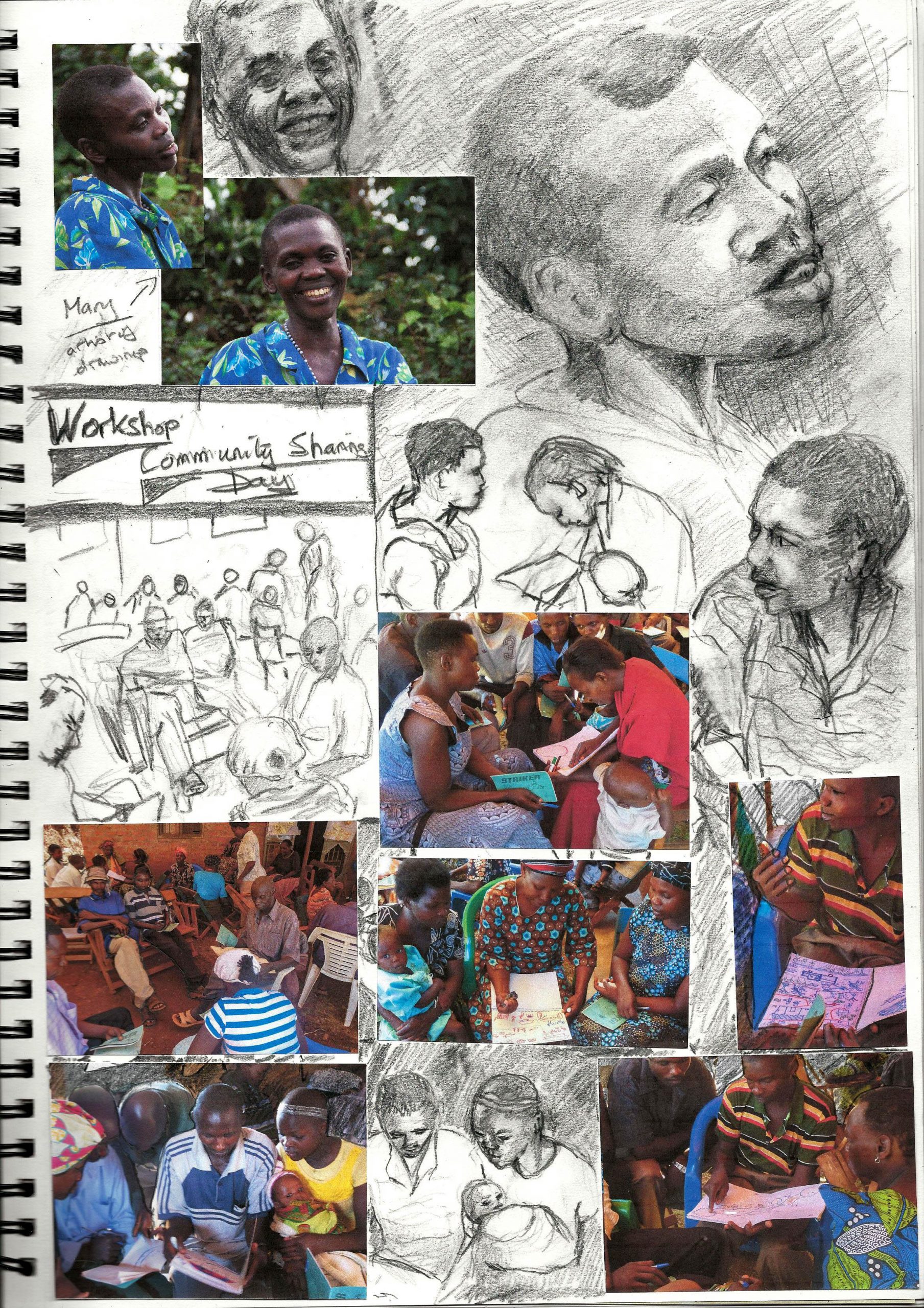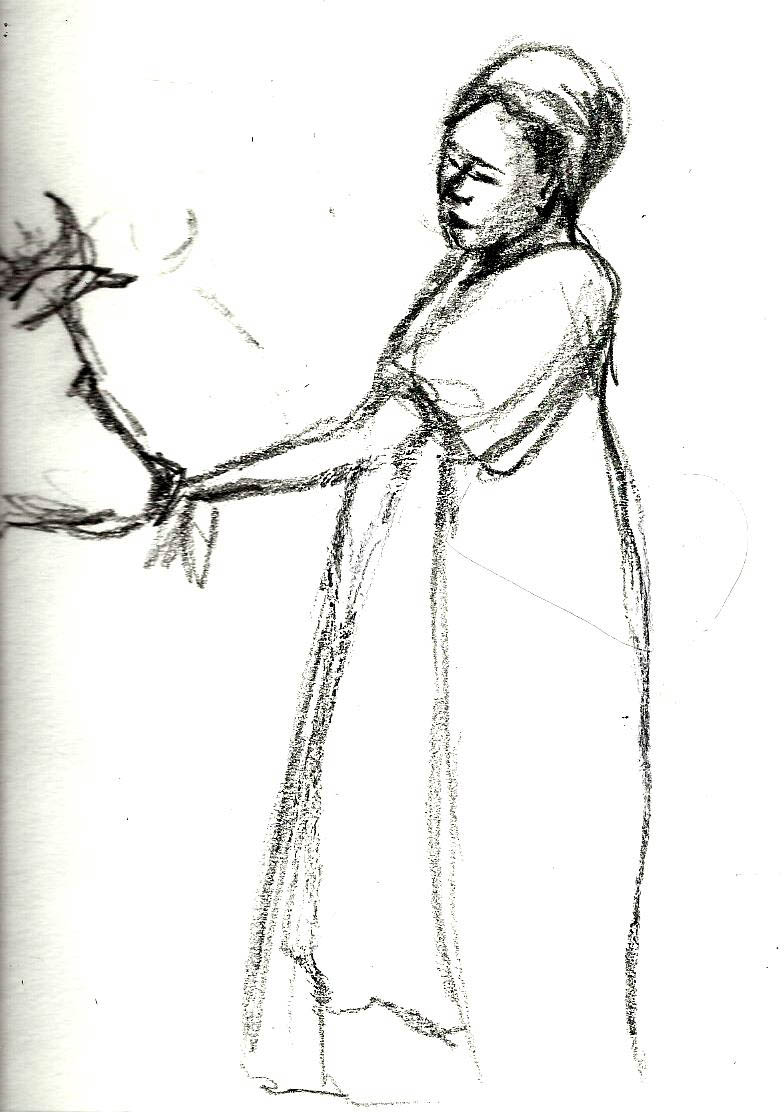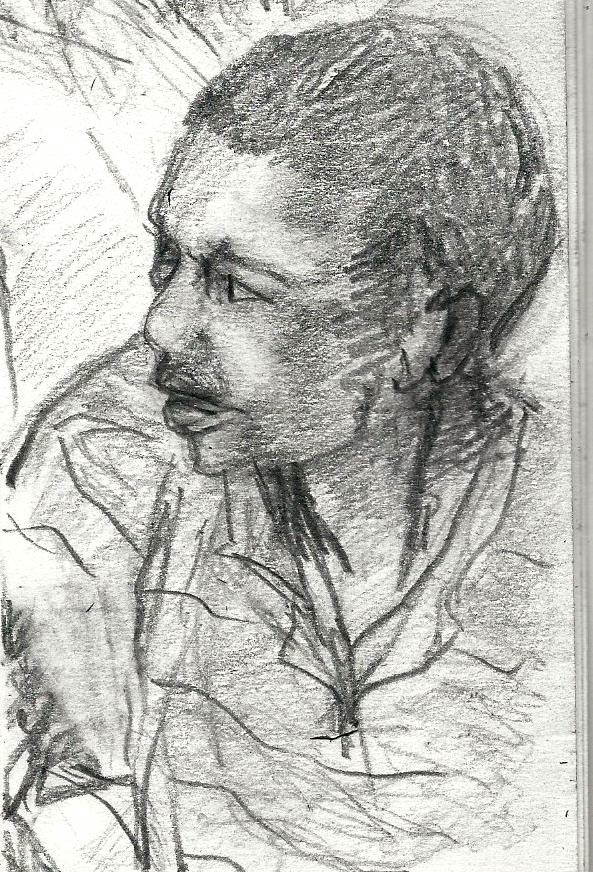Mary’s Story
Overview of animation draft September 2021
Mary’s story is a compilation of single image narrative marker drawings by women and men coffee farmers at a workshop on gender issues in coffee sector in Gumutindo Fair Trade coffee cooperative in Eastern Uganda.
The community narrative of Mary’s story is very important for gender advocacy in coffee sector. Gender inequalities in coffee farming households, including Fair Trade cooperatives, in Uganda, and in East Africa more widely, has been a key focus of my consultancy work. The overall narrative is therefore grounded in very common patterns of gender inequality throughout the East Africa region. These particular community drawings were selected because these are some of the most expressive single image narratives that have been produced in participatory workshops I have facilitated. The drawings are separate one-image narratives that are expressive in themselves – the most expressive being ones by a woman called Mary. I also have video footage and and photographs ofthe workshop – including role plays – workshop and Mbale context. Some of this material I used as the basis for my own drawings. Including Mary’s head that I drew in pencil from a photograph, then and then edited in SilverFX.
The narrative structure of the animation is constructed by me bringing together the selected drawings in the context of other video about women as ‘the Mother of the Nation’, and the backbone of African agriculture. But interventions, including organic production, tends to mostly target and reach men, and increase women’s workload without giving them more control over the income because they do not onw the land. I sequenced selected drawings as a constructed line animation narrative in TVPaint: 1) Bride kidnap 2) Property inequality 3) Nagging children and lazy husband 4) Husband goes drinking with girlfriend 5) Mary is left working in the fields 6) Mary gets a cow 7) Mary is left looking after the cow and shop while the husband still goes out with second wife. Then looped and reversed some clips to indicate a repetitive cycle whereby Mary’s own actions make very little difference to her husband’s behaviour.
The line animations are placed in a contextualising ‘reality wrapper’ of photos and my own sketches/drawings from photos including possible added animation of 8) Mary has fantasies of being a butcher with a sharp knife to take out her anger???. Another possibility would be to add/substitute video footage of the performers, particularly a section showing alternatives with men sweeping and helping women.
The linking narrative thread is a music soundtrack of one of the songs about gender inequality in the household written and performed by workshop participants in local Gisu language. I do not have an English translation but similarity to Swahili words enabled me to match roughly the meaning to some of the images so that they make sense to a local audience. I made effort to match the general rhythm of the animation to the rhythm of the music for global audiences. This ends a bit abruptly and I need to make a final credit sequence, but I was having some issues with file size to upload.
A further linking thread was an overlay of a ‘coffee’ brown gouache grain texture from my sketchbook with a round circle that could be a coffee mug, a sun or a narrative circle. Placed between the backgrounds and the black lines, this breaks the starkness of a white background and adds a more ‘artistic’ and organic feel, and also ties the photographs and animation together.
Creative translation assessment of animatic draft
The drawings alone could work very well as simple line animations using Disney principles: squash and stretch, arcs, anticipation etc. Timing will be key. But I discovered that this was far from simple and this requires considerable animation skill and experience. Further technical skill needs to be developed here.
The current animatic is a ‘maximalist version’ where I combine different sources together to see how the narrative might work and possible timings with the sound track, and make an initial assessment of how different styles might work together and complement each other for some feedback before refining this version.
Technical quality: Despite much tweaking, this still needs much more fluidity and better dramatic timing of the line animations to work with the music, incorporating squash and stretch, camera and viewpoint var. Squash and Stretch. I should have identified an audio source much earlier in the process.
Fidelity to community voices and context? the focus on animating the original marker line drawings is the closest I can get to fidelity to the original drawn sources. The addition of gouache and crayon overlay on role play photos also maintains close fidelity to what was said in the workshop. But the narratives have sometimes been constructed by me based on contextual information because the workshop documentation had some gaps.
Visual magic and creativity? I find the general ‘coffee’ style and mix of animated and figurative media quite striking, but there are other contextual photographs and images I could adapt. I now need to think much more strategically about timing, colours and style to reflect the message and how to lighten things with more comedy in order to emphasise the serious points.
But there were also many other narrative and stylistic option I could have chosen – see Creative Translation questions below.
Creative Translation Overview Padlet
Mary’s Story: Key Translation Questions
The following were some interlinked parallel underlying questions relating to creative translation options – pointing to other potential animation interpretations for future experiments following post-COVID crisis feedback from colleagues and communities in East Africa.
Narrative options
- Narrative balance between comedy and tragedy to counter ‘not all that feminist whingeing again!’ reaction and attract attention from different audiences ‘outside the already converted’? Importance of dramatic timing?
- Sequencing and contextualising of narrative? As a scene-based sequential narrative where different scene ‘nuggets’ are linked through visual dynamics as in ‘Primal’? or each is pushed, or represented by page turns? or linked with elements moving between frames as in ‘Merlot’?
- Possibility of a composite of cycled looped vignettes like ‘Tango’ to show the burden of things? (technically easier using looped symbols in Adobe Animate than TVPaint). Ending with some sort of comic or tragic concluding clip eg from the Mother of the Nation You Tube video, or gestures from the singers of the song. To show the cyclical build up of pressures to boiling anger.
General style/message medium
- Main mood: Mary’s anger? vulnerability? strength? what mix of these?
- How to visually present a balance of comedy for audience engagement to create contrast with tragedy/poignancy/seriousness of inequalities to promote action and advocacy?
- Fidelity of line: should I replicate original flat black marker line or use a more artistic ink?
- Use of colour? shape? fracture? follow more more globally recognised ‘African’ colour style’? ‘professional’ Disney/Hollywood style preferred in some comments on otherAfrican animations on You Tube?
Illusion of Life: realism/magic balance
- How far should the animations observe global conventions of visual dynamics and perspective to show ‘professionalism’? Which global visual conventions are necessary for clarity across audiences?
- Which visual conventions can be ignored to follow the flat uniform viewpoint and perspective of the original drawings and give a more ‘authentic/community look’? eg in use or non-use of perspective? use of upside-down faces? Which of these non-standard drawing features indicate different ways of seeing things? which are just due to the lack of time, practice and types of drawing materials at the workshop?
- How can clarity, drama and ‘magic’ be enhanced by selective use of colour? camera moves and lighting?
Sketchlog 2: Mary’s Story
A lot of my drawing experimentation was done directly in TVPaint with multiple iterations and refinements of the animation. My sketchlog was a way of slow down, and thinking about the imagery as well as bringing together the various sources I had. Because of the timeframe of the research, and prioritisation of learning technical animation skills, experimentation and storyboarding was shorter than would ideally be the case. Storyboarding is actually much quicker and more effective in TVPaint, and it is important to determine early on to explore which drawing styles can be replicated digitally. Sketchlog and animation work need to take place in parallel so that both are freed up to ‘accidental discoveries’ but also focused on the main messages of potential alternative narratives so that they do not become mechanical.
Evolution of Animation Experiments
The account below gives my notes and more details of my initial animation skills development till March 2021)
Narrative elements
I started by thinking about the overall narrative suggested by the community drawings. The community drawings were all single narrative images, most of which I had some documentation of. But they were images posted on a GALS Diamond infographic as ranked things women liked or did not like about being a woman. These gave a generalised quantified account of likes and dislikes for 10-12 women, but not an individual story in time.
My first idea was to construct a sequential narrative starting with different things women did not like in a sort of life cycle sequence, ending with possible dreams of owning a cow. After consideration I chose as the ending one of the ambiguous images of the small man with large woman leaving the woman with the alcohol shop and cow – still left behind by her husband and co-wife with even more responsibility of the cow and shop will she be able to control the money of still need to give it to him?
First thoughts: black and white line animation in Adobe Animate
My initial aim aim was to produce animations that were faithful to the expressive single image narratives in flat black marker, sequencing them in an ‘invented but believable’ way that could balance comedy and seriousness.
I was very much inspired by the expressiveness of simple stick figures of political graffiti artist STIK and the ironic humour and expressive lines of David Shrigley. In an early You Tube search for ‘short textless line animation’ I also discovered ‘Nuggets’ by Andreas Hykade that encapsulated most what I had in mind.
I planned to do the line animation in Adobe Animate, based on the short textless animations of Flash animators like Ross Bollinger and Alan Becker. But with a much more conceptually rich storyline provided by the original drawings.
At a slightly later stage I also came across the really powerful animation ‘Since the Better’ by Peter Millard with a very simple drawing that moves ‘boiling’ across the screen. The poignancy of this suggested a further option.
Broadening out: ‘African colour’?
Although my original ideas had been in line, with possibility of addition of flat colour, the visual methodology I work with also uses colour-coding to signify particular meanings like visions, ‘green fruit plans’ based on the four marker colours. Experienced members and staff of organisations in Rwenzoris in Western Uganda have also used attractive stylised colour figures in adapting their drawings for eg manuals on coffee techniques.
So before deciding on style, it was obviously relevant for translations to also look at colour possibilities.
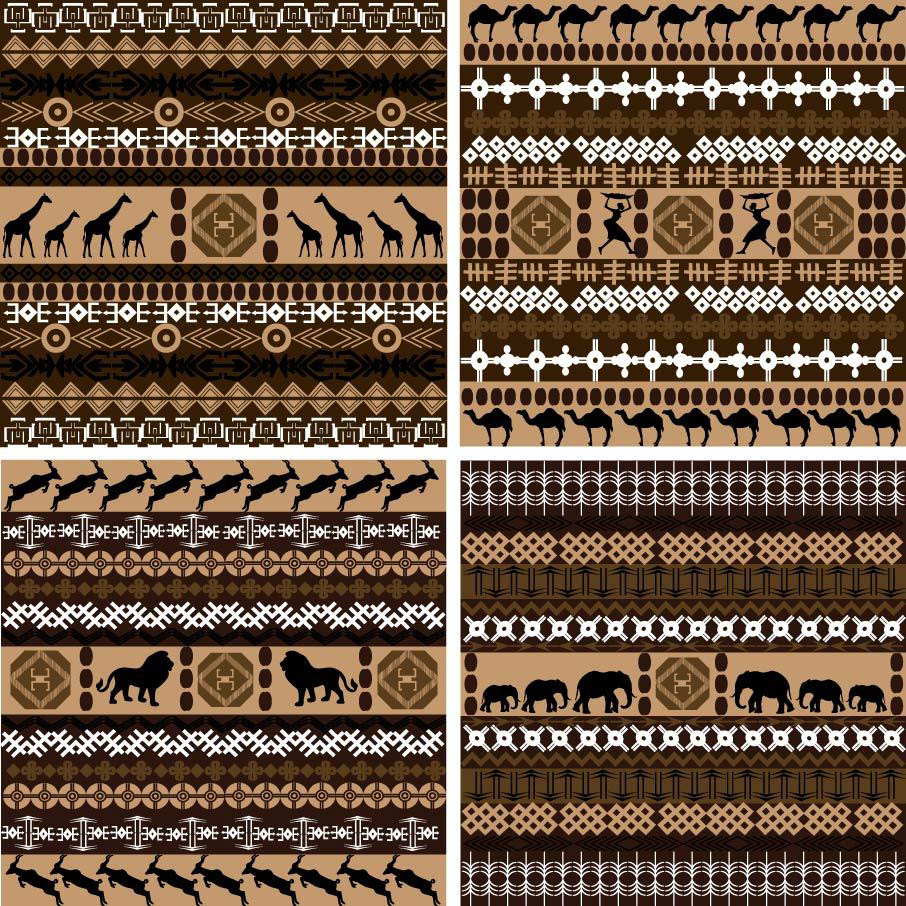















Exploration of narrative format
In parallel to the research on style, I also looked for different approaches to narrative that were used by different animators that might be relevant to this particular story.
These
Developing the animated clips
Sketchbook revisited: broadening out the style
I also worked on Sketchlog 2 Community Voices to think more deeply about the community drawings, and how they might be interpreted through different sequencing narratives compared to my initial story. I also experimented with sketching context photos in different pencil and ink and wash styles to whether and how I might integrate these sketches into the animation for ‘contextual realism’.
iPad Experiments
After initial attempts with Adobe Animate I started to experiment with line animation on my iPad as a more RSI-friendly was to put time into learning animation basics. I started by experimenting with changes in facial expressions and effects of different types of line in different iPad software.
I then chose the co-wife drawing as one of my very first animation experiments on my iPad because it presented many of the line animation challenges I knew I would have to address. As I was aiming at line animation rather than textural painting effects, I experimented in Rough Animator because it has relatively good layering and time-line management features.
As I was new to animation at this stage, I learned a lot from this experiment about animation basics on the iPad, and it showed me how complex even simple animation can be in terms of balancing timing and movement, simple walk cycles walking forward etc. But the result was quite difficult to fine tune on the iPad to something I was happy with. Though I could have achieved more even in Rough Animator if I had known what I know now about animation principles.
TV Paint experiments: line animation
Between Assignment 3 and 4 I started to learn TVPaint from Howard Wimshurst’s Animation Academy and Bloop animation on-line training because of its better drawing and timeline animation features compared to both iPad and Adobe Animate.
I used TVPaint and the Animation Academy course to develop skills in Disney animation principles and walk cycles. This meant I could become more ambitious in what I tried to achieve with the animation. In particular how to achieve some degree of humour with simple line animation.
1: First wife marriage kidnap

2: Man owns the Land and Property

3: Nagging children and lazy husband

6 First wife slave, second wife pleasure

7 Woman gets a cow






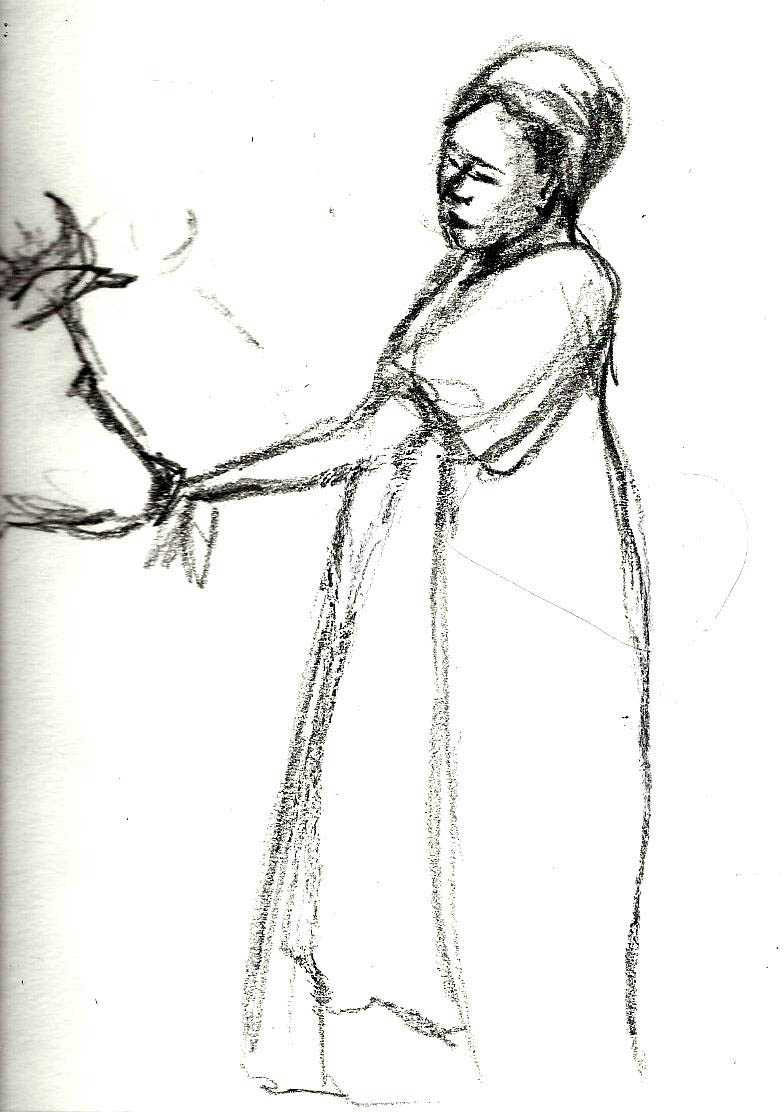

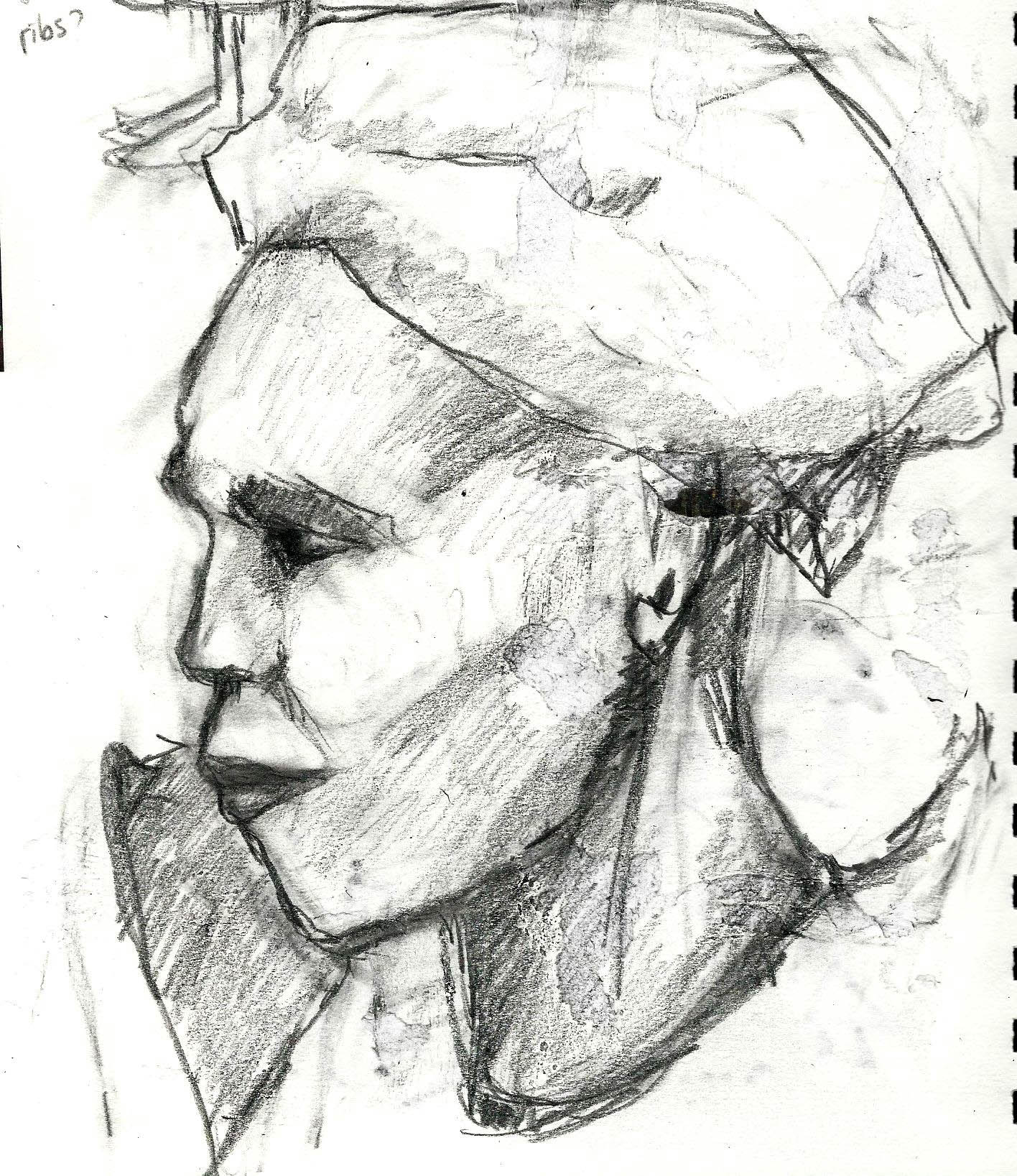
TVPaint. Refining the Stop Start animation with the cow running off the screen.

8: Even more work overload
This is a picture of a (smaller with trousers) man taking a woman (largest with skirt) away? (they have linked hands) from another woman (mother? co-wife? friend? bar owner? pimp?) who has a table with drinking utensils and house (alcohol bar? marriage table?) while a cow (whose?) looks sideways on the scene. But the meaning is unlear: This could be a woman (larger) taking her husband away from the bar. Could be a man and his girlfriend leaving the bar. The women could be co-wives. Or the man could have bought his wife with the livestock bottom right – but normnally that would be given to the woman’s father.
Animatics to March 2021
Try marker on paper write-on drawings and Rybczynski Imagine push narrative strategies. Use head or photo for the repeated push.








